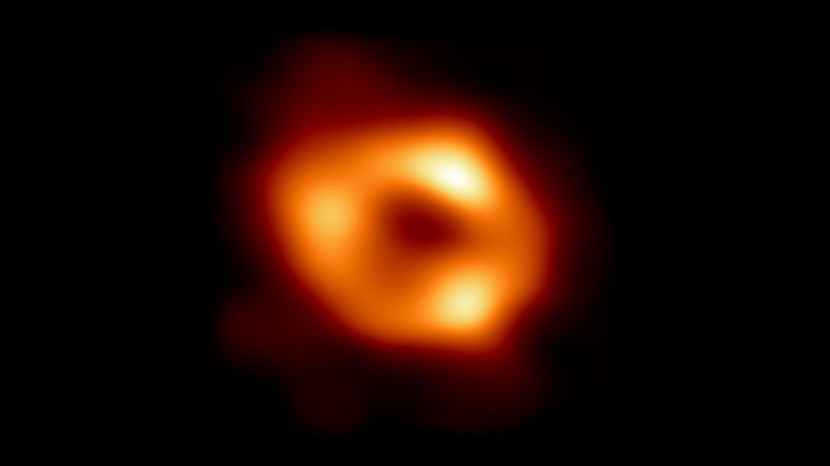
NASA has now provided the very first image of the supermassive black hole at the center of our galaxy, the Milky Way, on Thursday with the help of the collaborative effort known as the Event Horizon Telescope (EHT).
The photograph is the first direct visual evidence of the "gentle giant" that slumbers at the center of our region in the universe. The image shows an oval-shaped void surrounded by a bright ring of glowing gas. It is also only the second image captured of a black hole.
The Milky Way's Black Hole
The image is the first to provide a detailed glimpse of the immense feature that scientists dubbed Sagittarius A*, at the core of the Milky Way. In a statement, Michael Johnson, an astrophysicist at the Harvard-Smithsonian Center for Astrophysics, said that for decades, astronomers have wondered what lies at the heart of our galaxy.
The Milky way has been known to pull stars into tight orbits through its immense gravitational force. Now, scientists have the first direct image that confirms Sagittarius A* is indeed a black hole, as per NBC News.
An international team of astronomers, the Event Horizon Telescope, conducted the research with the help of more than 300 scientists from 80 different institutions worldwide. They published their findings in a special issue of The Astrophysical Journal Letters.
Have you seen the picture of the black hole at the center of our galaxy?
— NASA (@NASA) May 12, 2022
The image of Sagittarius A* (inset) was taken by @EHTelescope. Now see it in context with support from our @ChandraXray, Swift and NuSTAR observatories. Here's what the colors mean: https://t.co/Qkt3Qu3v1r pic.twitter.com/BONW7QZhsu
Astronomers are taking advantage of the observations to learn more about how the black hole at the center of our galaxy interacts with and feeds off its environment some 27,000 light-years from Earth. The EHT observed Sagittarius A* in April 2017, and the scientists also looked at the same black hole with facilities that detect different wavelengths of light.
According to NASA, in the multiwavelength observing campaign, they assembled X-ray data from NASA's Chandra X-ray Observatory, Nuclear Spectroscopic Telescope Array (NuSTAR), and the Neil Gehrels Swift Observatory. They also utilized radio data from the East Asian Very Long-Baseline Interferometer (VLBI) Observatory's Very Large Telescope in Chile.
Unprecedented Photograph from NASA
At a news conference in Washington, University of Arizona astronomer Feryal Ozel hailed the first image of the black hole. She also noted that the process of taking the black hole's picture was quite complex. Sagittarius A*, which is pronounced as Sagittarius "A" star, possesses four million times the mass of our sun. Johnson also called the cosmic body "ravenous but inefficient" because it was currently eating relatively little matter.
Johnson said that if the black hole were a person, it would consume a single grain of rice every million years. He noted that Sagittarius A* was putting out only a few hundred times the energy of the sun despite being much more massive in terms of mass.
Black holes are known to be extraordinarily dense objects in the universe that have gravity so strong even light cannot escape. This makes it extremely difficult to observe them with any sort of device. The event horizon is known as the point of no return and is where anything, from stars, planets, gas, dust, and all forms of electromagnetic radiation, get dragged into oblivion, Reuters reported.
© 2025 HNGN, All rights reserved. Do not reproduce without permission.








